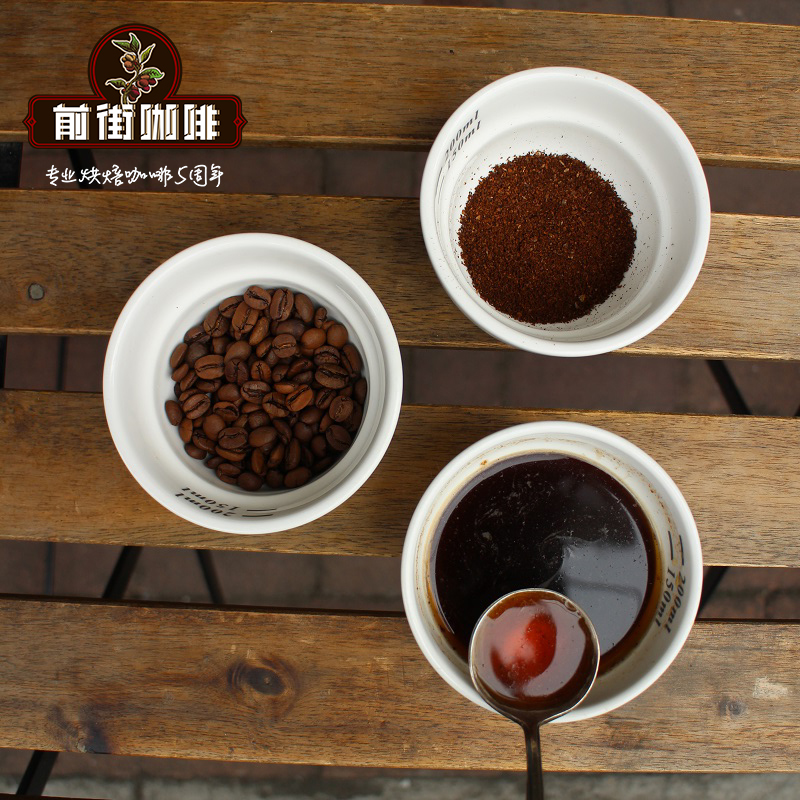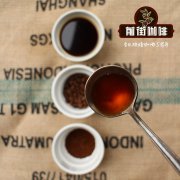Is there any coffee in India? How did Indian style-stained Malaba coffee beans come from? Unique wind stain treatment method

Professional coffee knowledge exchange more coffee bean information please follow the coffee workshop (Wechat official account cafe_style)
Is there any coffee in India? How did Indian style-stained Malaba coffee beans come from? What is the unique wind stain treatment method?
Monsoon coffee is also a famous coffee in India. The coffee is placed in the open warehouse by the sea and is hit by the monsoon, which makes the coffee's volume expand and its color turn yellow. This process will make the coffee less sour and sweeter, so that the monsoon coffee has the same characteristics as the Indonesian old coffee.
The coffee is placed in a specially designed warehouse near the port of Mangalore before export and is constantly turned to avoid excessive moisture and mildew. After 18 months of treatment, coffee beans can absorb the humid and hot moisture brought by the summer southwest monsoon and blow the hot and dry northeast monsoon in winter. Under the long-term blowing of the monsoon, the coffee beans will double in volume, turn golden in appearance, and become rich and spicy in taste. The evaluation of monsoon coffee is so polarized that it is acceptable to most people who like heavy taste, while those who like Central American coffee mostly avoid it.
Wind stain method:
Wind-stained coffee needs to be made with sun beans, and all factories dealing with wind-stained coffee face to the west to meet the salty and wet monsoon blowing from the southwest sea. The coffee beans are spread flat in the wind field, the windows are all open, and the wind stains to a certain extent, and then enter the bag, but because the beans will expand a lot in the process, the coffee beans can not be filled too full, and the coffee bags should not be piled too dense to avoid mildew and spoilage due to lack of wind. It is also necessary to pour out coffee beans and replace sacks from time to time to avoid mold, which is a very time-consuming and labor-consuming project.
The weathering period is about 12 to 16 weeks, and after it is ripe, it will be fumigated to drive out the weevil, and finally the beans will be screened manually to remove the failed beans that have not turned golden. After three to four months of wind treatment, green coffee beans are twice as large in volume and reduced in weight and density. Beans will swell and turn to milky gold!
Indian-style Malabar coffee has been favored by Europeans since the 17th century. This kind of wind-stained coffee is a new flavor created inadvertently. In the 17th and 18th centuries, India shipped coffee beans to Europe by sailboat, which took six months. The raw beans were placed on the bottom of the barn and absorbed the moisture and salty taste of the sea. The raw beans arrived in Europe and deteriorated, and the color changed from dark green to yellowish brown of rice. The acidity of the coffee almost disappeared, but it unexpectedly developed a strong nutty and shell flavor, which tasted full of tea, with a bit of Xuanmi tea flavor. Nordic people like this kind of golden alternative coffee very much. In 1869, the opening of the Suez Canal, coupled with the advent of steamships, shortened the sailing time from India to Europe. However, customers began to complain that Indian coffee was "stale", lost its charming color and flavor, and orders plummeted, and Indian exporters began to study the solution. It was only then that it was found that the time for coffee beans to be shipped to Europe had been shortened by more than half, and the original flavor had been lost before it was ripe. Some smart people think of the salty and wet environment of the Indian sea from late May to September along the coast of Malabar in southwestern India. After several experiments, it is sure enough to produce a tawny coffee without sour taste similar to that of the past, so it is called monsoon bean, or wind-soaked bean.
Indian coffee is originally thick, low and less sour, while wind-stained coffee beans are made from sun-cured beans. All the factories dealing with wind-stained coffee beans face to the west, facing the salty monsoon blowing from the southwest sea. The coffee beans are laid flat in the wind field, the windows are all open, and the wind stains to a certain extent, and then enter the bag, but because the beans will expand a lot in the process, so the coffee beans can not be filled too full, and the coffee bags should not be piled up too dense to avoid mildew and spoilage due to airtight, and from time to time to pour out the coffee beans and replace the sacks. To avoid the breeding of mold is a very time-consuming and labor-consuming project. The weathering period is about 12 to 16 weeks. After ripening, the weevil is fumigated to drive away the weevil. Finally, after manual screening of beans, pick out the failed beans that have not turned golden. After three to four months of wind treatment, the volume of Malaba raw beans expands by one to two times, resulting in a decrease in weight and density.
Indian style-stained Malabar coffee beans, although the beans are fat, they are soft beans that are strong and dry. Because the coffee beans have been exposed to the moist monsoon for a long time, not only the color of the beans has turned yellow and is known as the golden Malaba, the acidity of the coffee itself has also been greatly reduced, and the taste is very special. Wind-soaked beans are drunk individually, with rich aroma of wheat and tea. For hundreds of years, it has been widely used by European coffee manufacturers to prepare mixed coffee beans, which can increase the consistency and tea feel. Make a good espresso.
Qianjie recommended cooking:
Filter cup: Hario V60
Water temperature: 88 degrees
Degree of grinding: small Fuji degree of grinding 4
Cooking methods: the ratio of water to powder is 1:15, 15g powder, the first injection of 25g water, 25 s steaming, the second injection to 120g water cut off, waiting for the powder bed water to half and then water injection, slow water injection until 225g water, extraction time about 2:00
Analysis: using three-stage brewing to clarify the flavor of the front, middle and back of the coffee. Because the V60 has many ribs and the drainage speed is fast, it can prolong the extraction time when the water is cut off.
Important Notice :
前街咖啡 FrontStreet Coffee has moved to new addredd:
FrontStreet Coffee Address: 315,Donghua East Road,GuangZhou
Tel:020 38364473
- Prev

Indian monsoon coffee | the history of wind-stained Malaba coffee? How to brew wind-stained coffee? Indian.
Professional coffee knowledge exchange more coffee bean information please follow the coffee workshop (Wechat official account cafe_style) Indian monsoon coffee | the history of wind-stained coffee? How to brew wind-stained coffee? Is the Indian wind-stained coffee good? When it comes to Asian coffee, Taiwanese consumers should be most familiar with the low-acid, mellow Sumatran coffee, or the continuous increase in production in recent years.
- Next

Indian Coffee Brand | Calendar of Indian monsoon coffee [wind-stained Malaba Monsoon Malabar]
Professional coffee knowledge exchange more coffee bean information please follow the coffee workshop (Wechat official account cafe_style) Indian coffee brand | Indian monsoon coffee [wind-stained Malaba Monsoon Malabar] history? How to cook it properly? The so-called monsoon Malaba, as its name implies, is actually blown out by the wind. It is said that there would have been this strange thing that is now popular in Europe at the beginning.
Related
- Detailed explanation of Jadeite planting Land in Panamanian Jadeite Manor introduction to the grading system of Jadeite competitive bidding, Red bid, Green bid and Rose Summer
- Story of Coffee planting in Brenka region of Costa Rica Stonehenge Manor anaerobic heavy honey treatment of flavor mouth
- What's on the barrel of Blue Mountain Coffee beans?
- Can American coffee also pull flowers? How to use hot American style to pull out a good-looking pattern?
- Can you make a cold extract with coffee beans? What is the right proportion for cold-extracted coffee formula?
- Indonesian PWN Gold Mandrine Coffee Origin Features Flavor How to Chong? Mandolin coffee is American.
- A brief introduction to the flavor characteristics of Brazilian yellow bourbon coffee beans
- What is the effect of different water quality on the flavor of cold-extracted coffee? What kind of water is best for brewing coffee?
- Why do you think of Rose Summer whenever you mention Panamanian coffee?
- Introduction to the characteristics of authentic blue mountain coffee bean producing areas? What is the CIB Coffee Authority in Jamaica?

